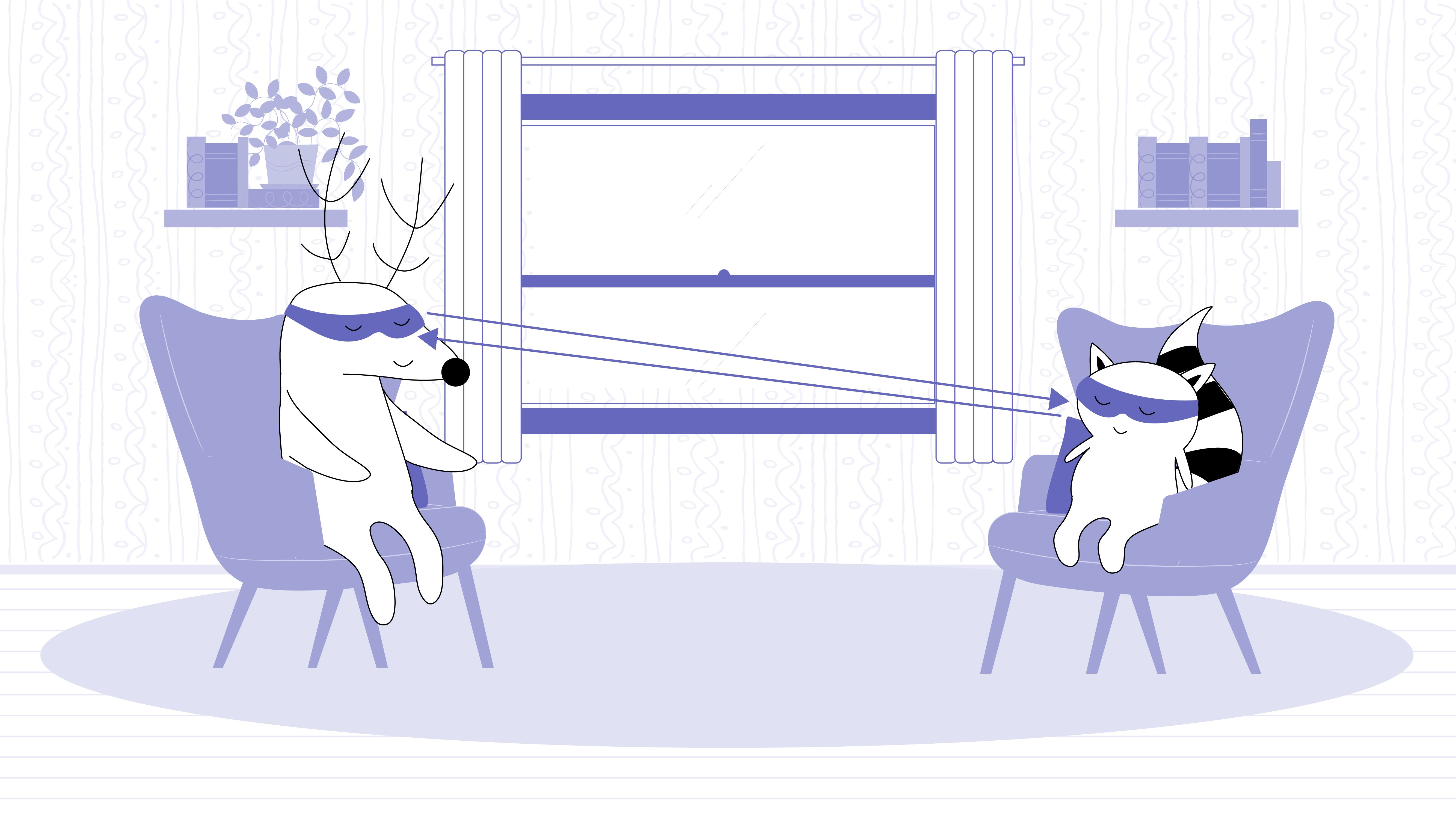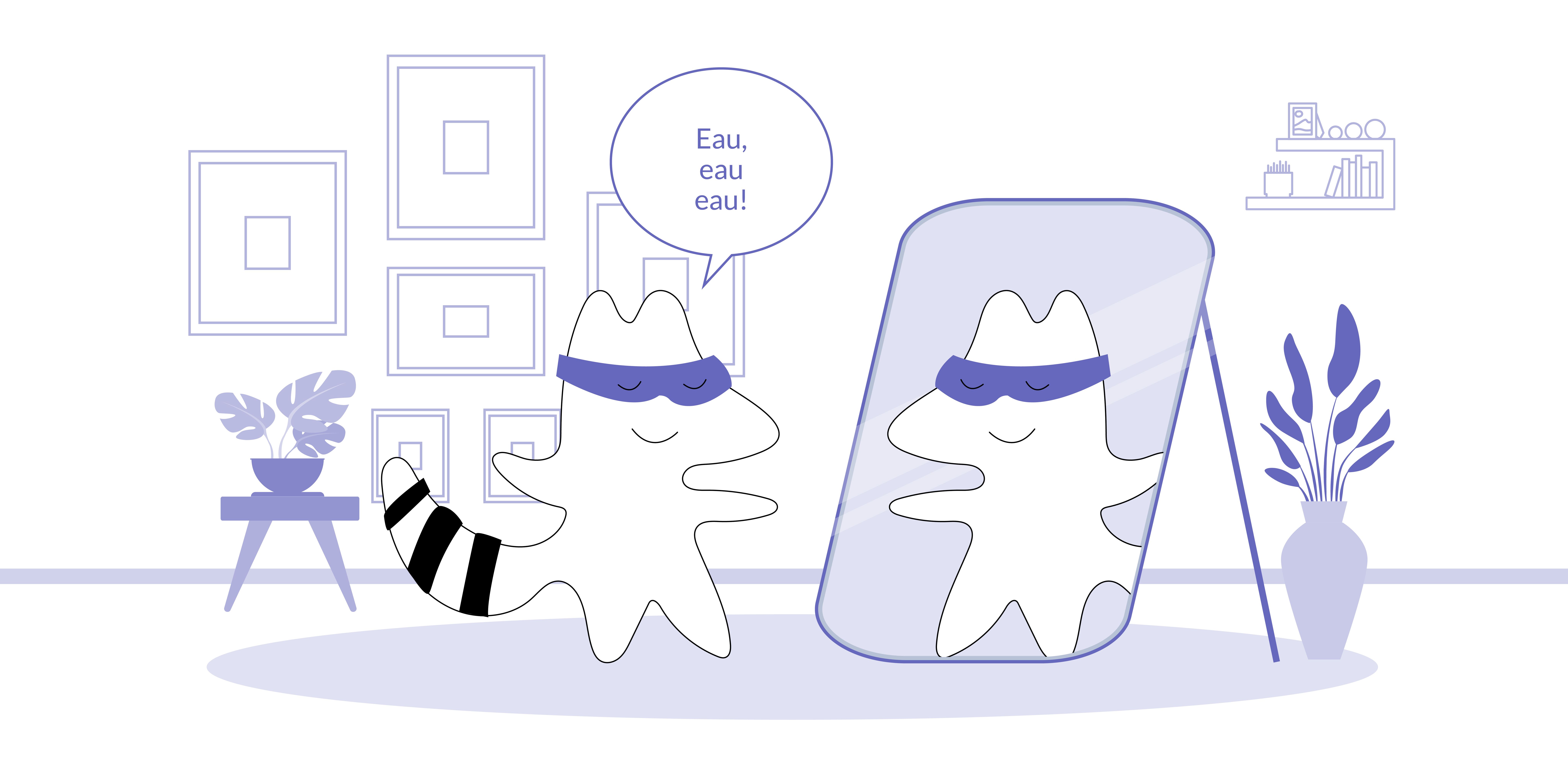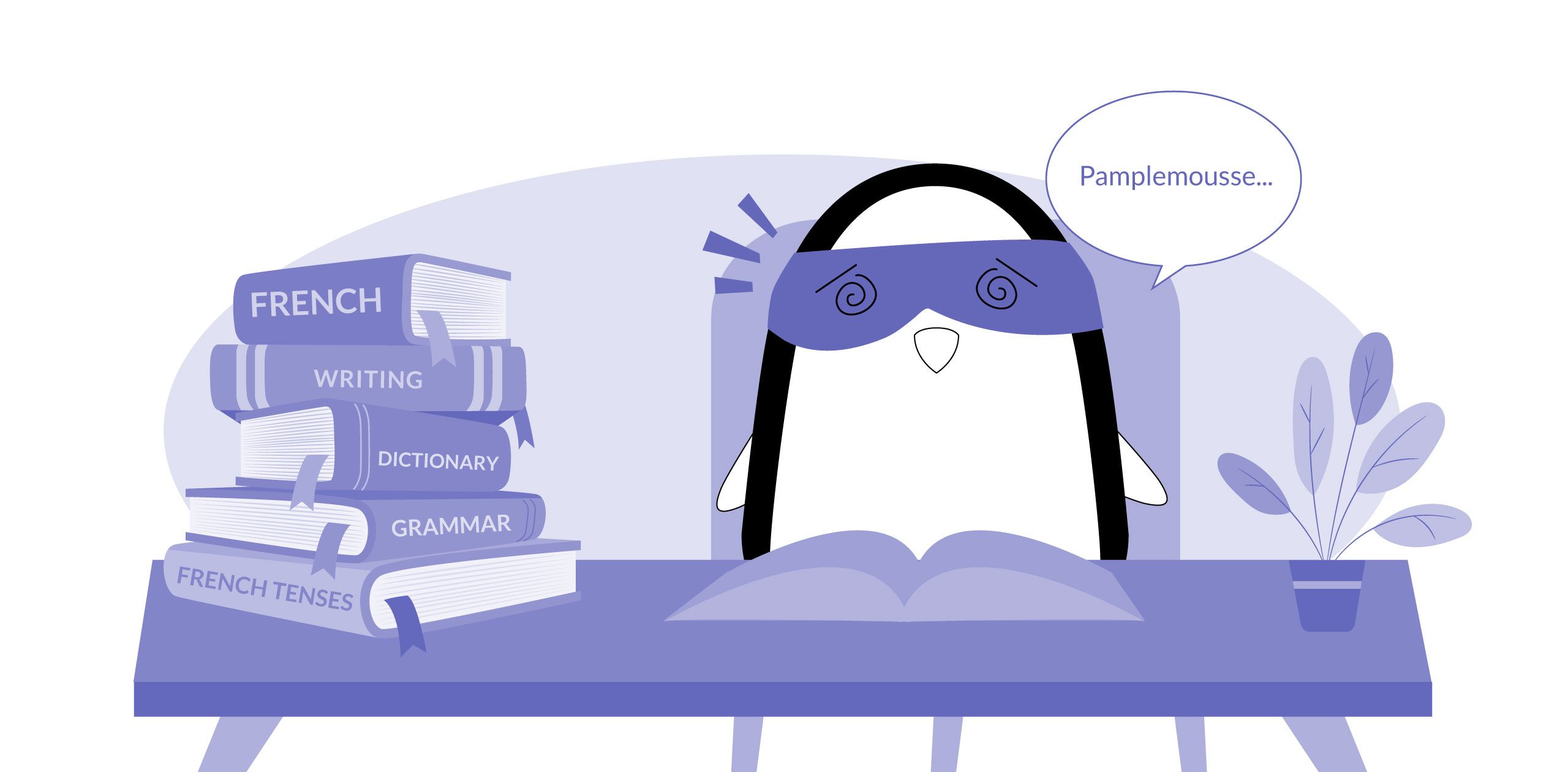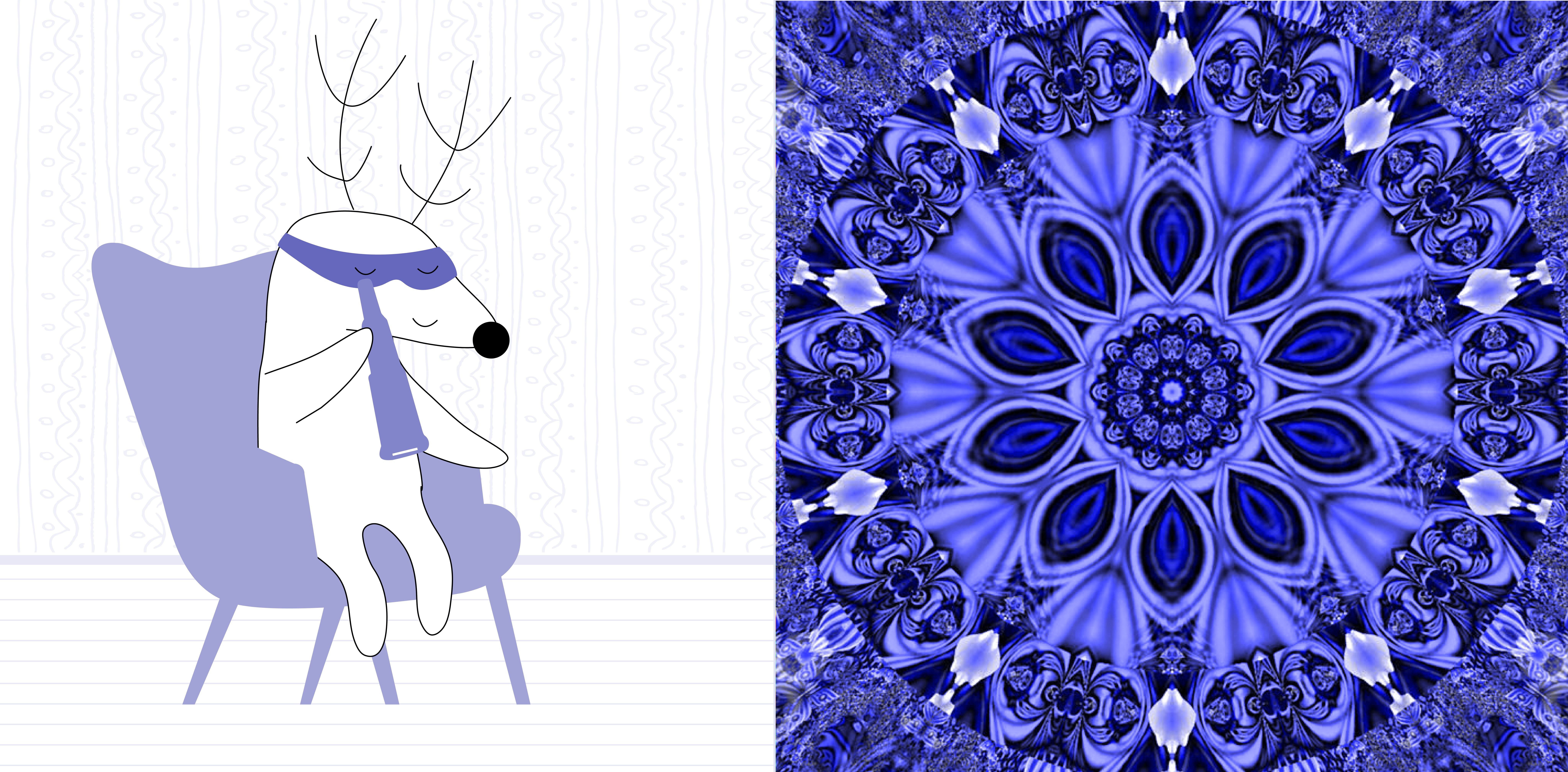
Colors are more than just a visual aspect of our world; they carry deep cultural and emotional significance. They can symbolize feelings, ideas, and events and are embedded in our language and daily expressions. In this article, we are going to dive into the vibrant world of color as it exists in the French language.
French, like many languages, has a rich vocabulary that reflects its cultural history and values. One area where this is particularly evident is in words used to describe colors. Each color has its unique symbolism and expressive power, and understanding these nuances can give us insights into French culture and mentality.
Learn French with Langster
Grammar Note
Before we move to the French names for the most common colors, it’s essential to realize which grammar rules apply to using these new words in sentences.
Colors in French agree with gender and number with the noun they describe and follow a specific order in sentences.
Gender
First things first: the word for "color" in French is couleur, which is a feminine noun. Therefore, when you talk about colors generally, they should be accompanied by the feminine articles la (the) and une (a, an).
For example:
French
English
La couleur rouge.
The red color.
Une couleur bleu clair.
A light blue color.
Nonetheless, all colors in French are masculine nouns on their own: le rouge, le rose, le bleu, etc. For example:
French
English
Quelle est ta couleur préférée?
What is your favorite color?
Le gris.
Gray.
Gender Agreement
French colors generally agree in gender with the nouns they describe.
The general rule is to add an -e to the end of the color when it is used to describe a feminine noun. Here’s an example to illustrate the rule:
French
English
Le bateau blanc.
The white boat.
La maison blanche.
The white house.
Note how the French word for the white color — blanc — changes to blanche when used along with the French word for a house, which is a feminine noun in French.
However, colors that already end in -e, as well as the color brown — marron — do not change regardless of whether they are used to describe feminine or masculine nouns.
Here are some examples:
French
English
Un sac vert.
A green bag.
Une pomme verte.
A green apple.
Le ciel bleu.
The blue sky.
La mer est bleue.
The sea is blue.
Le soleil rouge.
The red sun.
Une robe rouge.
A red dress.
La table marron.
The brown table.
Les yeux marron.
The brown eyes.
Number Agreement
When it comes to agreement in number, the main rule is to add an -s to the end of the color to make it plural. Like here:
French
English
Un chat noir.
A black cat.
Des chats noirs.
Some black cats.
However, this rule only applies in certain cases, and there are some exceptions:
- Compound colors (colors made up of two or more words) and colors derived from things (like fruits, flowers, etc.) do not change in the plural.
French
English
Des chemises bleu marine.
Navy blue shirts.
Des robes orange.
Orange dresses.
- When two or more colors are used together without a hyphen, they remain invariable.
French
English
Des voitures rouge et noir.
Red and black cars.
In this case, rouge and noir do not take an -s at the end because they are used together to describe the cars.
Word Order
In the French language, the common word order for using colors is:
- nouns (being described) + color (that describes them),
- the verb être (to be) + color.
French
English
Le ciel est bleu.
The sky is blue.
La pomme est verte.
The apple is green.
Les fleurs sont jaunes.
The flowers are yellow.
By understanding these grammar rules, you can correctly use French colors to describe objects, feelings, and more.
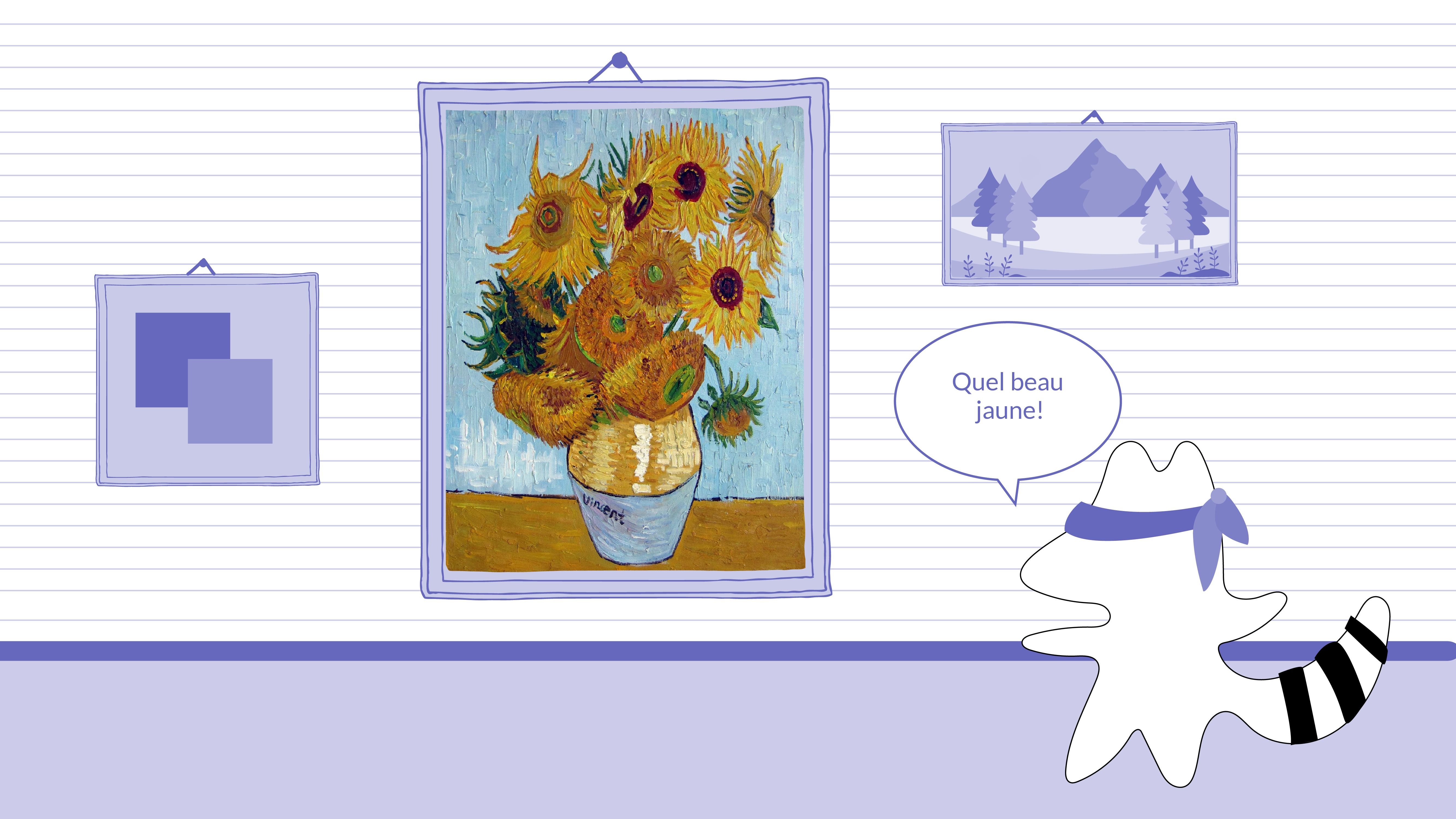
Most Common French Colors to Memorize
Below, we explore some of the most popular color names and their usage in everyday French. In the following sections, you will also learn the correct pronunciation of different colors.
Le Rouge — Red
| Rouge | Singular | Plural |
|---|---|---|
| Masculine | Rouge | Rouges |
| Feminine | Rouge | Rouges |
| Rouge | Singular | Plural |
|---|---|---|
| Masculine | Rouge | Rouges |
| Feminine | Rouge | Rouges |
Red, or rouge in French, is a color of passion, love, and revolution. It's a powerful color that's often associated with intense emotions.
The French flag, famously known as Le Tricolore, features red as one of its three colors, symbolizing the bloodshed of the French Revolution.
There are numerous expressions and idioms in French that involve the color red. For instance, rougir de honte means to blush from shame, and voir rouge translates to “seeing red,” which implies anger.
Le Bleu — Blue
| Bleu | Singular | Plural |
|---|---|---|
| Masculine | Bleu | Bleus |
| Feminine | Bleue | Bleues |
| Bleu | Singular | Plural |
|---|---|---|
| Masculine | Bleu | Bleus |
| Feminine | Bleue | Bleues |
Blue, or bleu in French, holds a special place in French culture and is often referred to as the favorite color of French people. It's associated with royalty, peace, and the vastness of the sky and sea.
Just like in English, there are various shades of blue in French, each with its unique descriptor. The term bleu royal, for instance, refers to a deep, bright blue that was historically associated with the French monarchy.
Here are some of the shades of blue you might come across in everyday life:
French
English
Le bleu clair
Light Blue
Le bleu foncé
Dark Blue
Le bleu ciel
Sky Blue
Le bleu marine
Navy Blue
Le bleu bébé
Baby Blue
So, whether you mean to compliment someone’s blue eyes or talk about that blue cheese you tried yesterday, you now have the right color shade to describe anything.
In contemporary times, the color blue has come to symbolize national pride, particularly in sports. The rallying cry Allez les bleus! is often heard during football and rugby matches, cheering on the French national teams in their iconic blue jerseys.
This color is also used in idioms and expressions — avoir une peur bleue, for example, means to be scared stiff.
As you may have noticed from the example table above, In terms of grammar, the adjective bleu changes its form to agree with the gender and number of the noun it modifies despite the pronunciation remaining consistent across all forms. This rule exemplifies the complex beauty of the French language and its colorful expressions.
Le Blanc — White
| Blanc | Singular | Plural |
|---|---|---|
| Masculine | Blanc | Blancs |
| Feminine | Blanche | Blanches |
| Blanc | Singular | Plural |
|---|---|---|
| Masculine | Blanc | Blancs |
| Feminine | Blanche | Blanches |
White, or blanc in French, is a color that carries a multitude of meanings and associations. Universally, white often symbolizes purity, innocence, and peace. In the context of French culture, these associations hold true, but there are additional meanings attached to this color.
Historically, blanc was associated with royalty, much like bleu. French kings were often depicted wearing white, a tradition that continued up until the end of the monarchy. Today, white is also associated with cleanliness and simplicity, reflected in the popularity of crisp white linens and minimalist interior design in many French homes.
In the French language, there are several idioms and phrases that involve the color white. For instance, blanc comme un linge literally translates to “white as a sheet” and is used to describe someone who is extremely pale, usually from fear or shock.
Another common phrase is nuit blanche, which translates to “white night” and is used to describe a sleepless night or an all-nighter. And, you’ve probably heard of the expression avoir carte blanche — to have complete freedom to do something.

Le Jaune — Yellow
| Jaune | Singular | Plural |
|---|---|---|
| Masculine | Jaune | Jaunes |
| Feminine | Jaune | Jaunes |
| Jaune | Singular | Plural |
|---|---|---|
| Masculine | Jaune | Jaunes |
| Feminine | Jaune | Jaunes |
Yellow, or jaune in French, carries diverse symbolic meanings. It's associated with both positivity, like warmth and joy, and negativity, such as jealousy and deceit.
Expressions involving yellow are quite common in French — for instance, rire jaune means a forced laugh.
Le Vert — Green
| Vert | Singular | Plural |
|---|---|---|
| Masculine | Vert | Verts |
| Feminine | Verte | Vertes |
| Vert | Singular | Plural |
|---|---|---|
| Masculine | Vert | Verts |
| Feminine | Verte | Vertes |
Green, or vert in French, is a color deeply connected to nature, freshness, and tranquility. In France, green spaces are highly valued, and this appreciation is reflected in the language.
Idiomatic expressions with green often involve nature or feelings. Être vert de rage means to be green with rage, while donner le feu vert translates to “giving the green light.” Another popular phrase is avoir la main verte, which is a French translation for “having a green thumb,” indicating a knack for gardening.
Le Rose — Pink
| Rose | Singular | Plural |
|---|---|---|
| Masculine | Rose | Roses |
| Feminine | Rose | Roses |
| Rose | Singular | Plural |
|---|---|---|
| Masculine | Rose | Roses |
| Feminine | Rose | Roses |
Pink, known as rose in French, is a color generally associated with tenderness, love, and femininity.
However, pink wasn't always associated with femininity. In fact, it was historically considered a variant of red and was often associated with boys. However, by the mid-20th century, this perception shifted, and pink became more commonly connected with girls and femininity. Nowadays, le rose also symbolizes charm, politeness, and sweetness in French culture.
Perhaps one of the most commonly known French expressions — voir la vie en rose — literally translates to “seeing life in pink,” which means to view life through rose-colored glasses or to have an optimistic perspective.
Similarly, à l'eau de rose means something is slushy, cheesy, and overly sentimental.
Le Marron — Brown
| Marron | Singular | Plural |
|---|---|---|
| Masculine | Marron | Marron |
| Feminine | Marron | Marron |
| Marron | Singular | Plural |
|---|---|---|
| Masculine | Marron | Marron |
| Feminine | Marron | Marron |
Brown, or marron in French, is connected with wood and nature due to its prevalence in the natural environment. It was linked to the working class, who often wore brown clothing, as it was less likely to show dirt and grime. Today, le marron is also associated with stability, reliability, and comfort in French culture.
For instance, a common saying, être marron, which literally means “to be brown,” is used to signify being duped or fooled.
Regarding grammar, marron is an exception in French color adjectives, as it remains invariable and does not change form with gender or number.
Le Gris — Gray
| Gris | Singular | Plural |
|---|---|---|
| Masculine | Gris | Gris |
| Feminine | Grise | Grises |
| Gris | Singular | Plural |
|---|---|---|
| Masculine | Gris | Gris |
| Feminine | Grise | Grises |
Gray, or gris in French, is often associated with neutrality, balance, and sophistication. It's also been linked to intellect and wisdom, symbolizing the balance between black and white — or between two opposing concepts.
Today, le gris is commonly associated with modernity and technology, reflecting its widespread use in contemporary design and architecture.
Le Noir — Black
| Noir | Singular | Plural |
|---|---|---|
| Masculine | Noir | Noirs |
| Feminine | Noire | Noires |
| Noir | Singular | Plural |
|---|---|---|
| Masculine | Noir | Noirs |
| Feminine | Noire | Noires |
Black, or noir in French, is often associated with power, formality, and mystery. Black is associated with mourning and death due to its depth and intensity. However, it has also been linked to authority and power, reflected in the attire of judges, priests, and other figures of authority.
Nowadays, le noir is commonly associated with sophistication and elegance, reflecting its widespread use in fashion and design.
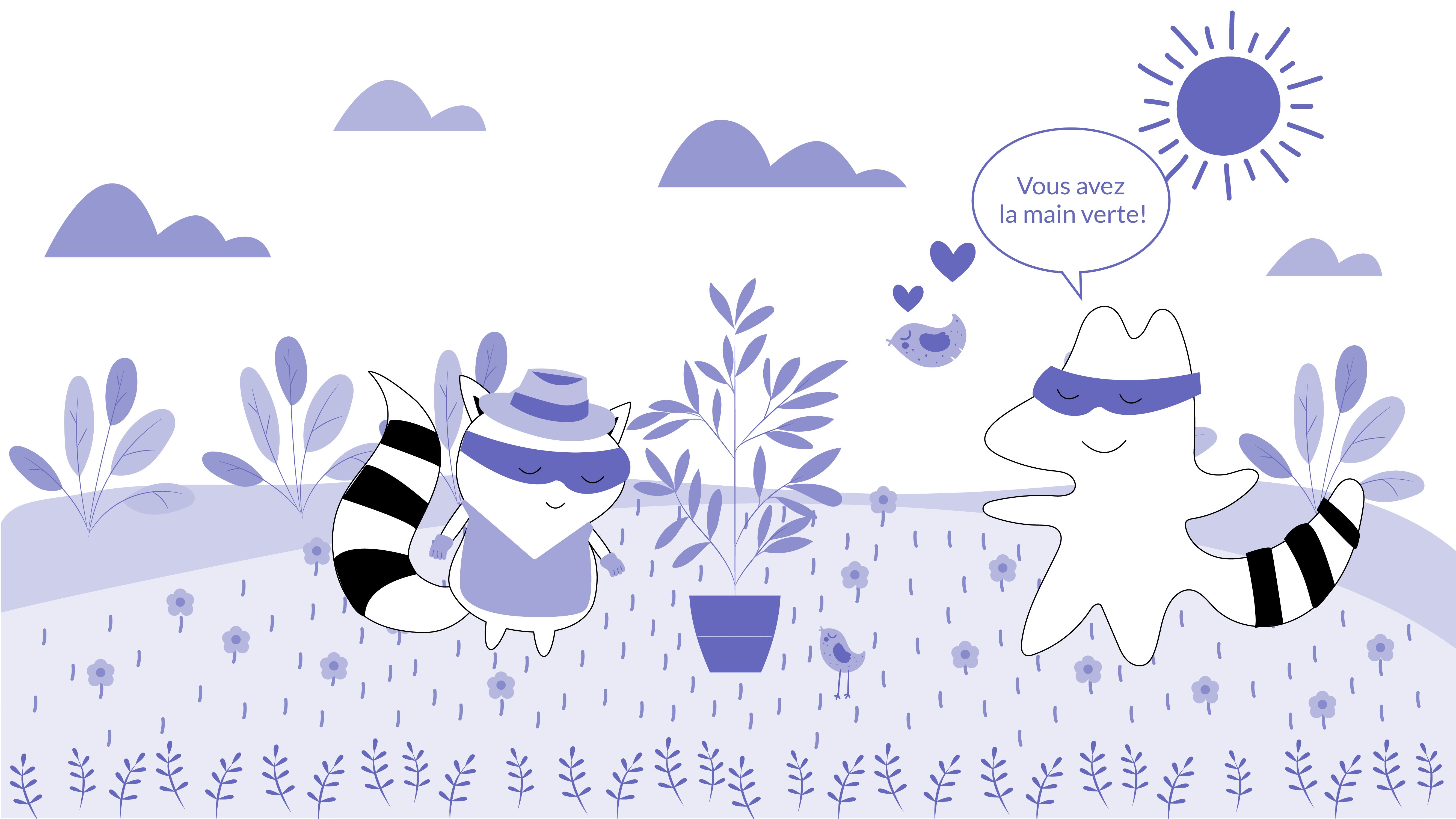
Color Combinations and Shades
Describing colors can range from practical to technical to poetic. Below, you will find more tips on describing a color in French, whether you want to be precise or lyrical.
Adverbs and Colors
When using an adverb with French colors, the color no longer needs to align with the gender or plurality of the nouns it describes. Consequently, these adverbs will always be in their singular, masculine forms when paired with a color.
For instance, consider this sentence:
French
English
Marc porte une chemise rouge vif.
Marc wears a bright red shirt.
Here, even though chemise is a feminine noun, the adjective rouge vif doesn't change to match because rouge is modified by the adjective vif.
Another example could be:
French
English
Dans le jardin, les fleurs rose clair attirent particulièrement les abeilles.
In the garden, the light pink flowers particularly attract bees.
In this case, even though fleurs is a feminine and plural noun, rose clair remains unchanged.
Color Shades in French
But what if you want to describe French colors in a more precise manner? Let's take a look at some useful words for discussing color shades in French:
| French Word | Translation | Example Sentence | Translation |
|---|---|---|---|
| foncé | dark | Les chaussures de Pierre sont marron foncé. | Pierre's shoes are dark brown. |
| clair | light | Le ciel est bleu clair aujourd'hui. | The sky is light blue today. |
| fluo | fluorescent | Monique porte un bandeau fluo à la gym. | Monique wears a fluorescent headband to the gym. |
| fade | faded, washed-out | Les rideaux de la cuisine sont vraiment fade, il faudrait les changer. | The kitchen curtains are really faded; they should be changed. |
| -âtre | -ish. This suffix can be used with any color in French and often sounds a bit literary or poetic. | Le temps était grisâtre et froid. | The weather was grayish and cold. |
| vif | bright (literally, alive) | Le vert vif du gazon après la pluie est magnifique. | The bright green of the lawn after the rain is beautiful. |
| une nuance | a shade | J'aime toutes les nuances de bleu. | I like all shades of blue. |
| French Word | Translation | Example Sentence | Translation |
|---|---|---|---|
| foncé | dark | Les chaussures de Pierre sont marron foncé. | Pierre's shoes are dark brown. |
| clair | light | Le ciel est bleu clair aujourd'hui. | The sky is light blue today. |
| fluo | fluorescent | Monique porte un bandeau fluo à la gym. | Monique wears a fluorescent headband to the gym. |
| fade | faded, washed-out | Les rideaux de la cuisine sont vraiment fade, il faudrait les changer. | The kitchen curtains are really faded; they should be changed. |
| -âtre | -ish. This suffix can be used with any color in French and often sounds a bit literary or poetic. | Le temps était grisâtre et froid. | The weather was grayish and cold. |
| vif | bright (literally, alive) | Le vert vif du gazon après la pluie est magnifique. | The bright green of the lawn after the rain is beautiful. |
| une nuance | a shade | J'aime toutes les nuances de bleu. | I like all shades of blue. |
Hair Colors in French
It’s important to note that colors for hair sometimes use different words than the standard name for that color. When talking about someone's hair color in French, you can use these words:
French
English
les cheveux
hair
bruns
brown
blonds
blond
roux
red
noirs
black
gris
gray
All of the above are in the masculine plural because they need to agree with cheveux.
For unusual hair colors in French, just use the standard color word. If you want to specify that hair is dyed a certain color, say colorés en. For example:
French
English
Meagan a les cheveux colorés en bleu.
Meagan's hair is dyed blue.
To talk about people with these specific hair color, use these words:
French
English
brun, brune
brunette
blond, blonde
blonde
roux, rousse
redhead
Note: While we use the word brun(e) to talk about brown hair, brown eyes are still referred to as marron.
Final Note

The world of color in the French language is truly a vibrant one. Each hue holds its own cultural significance and expressive power, giving us a deeper understanding of French culture and mentality. By learning French colors and using this vocabulary, you can describe things more precisely, enrich your language skills, and appreciate the overall beauty of French.
The French language, like a kaleidoscope, is a spectrum of colors waiting to be explored. So, let's continue to dive deeper into this colorful linguistic journey — download our Langster app today, and triple your vocabulary by reading stories!
Learn French with Langster







